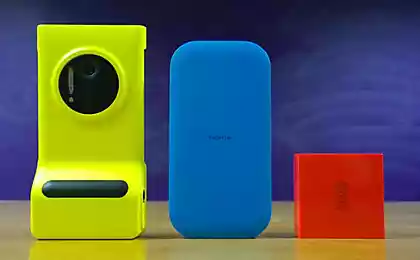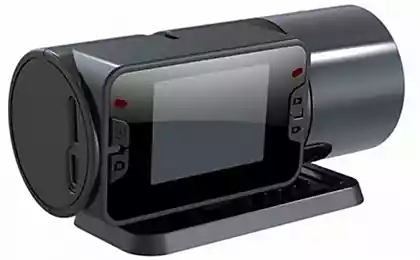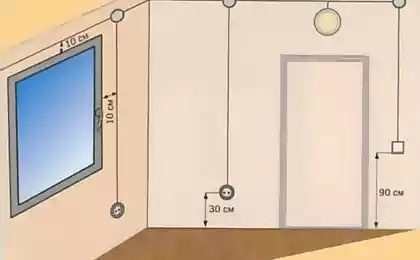770
Wireless HD video: substitutes for wires
Wireless HD video: extender-videosender, or substitutes for the wire In today's article I would like to highlight a class of wireless devices transmit HD video and sound extenders. Yet these devices are often called “videosender”, although this word reflects only some of the functionality that is responsible for transferring the video. The essence of the extenders
So, before you rush to learn a specific piece of iron, let's first review the essence of the extenders. The word extender is derived from the English verb “extend” to expand. That is, devices designed to extend the transmission of video and audio from one device to another/others, with the device of reception and transmission should not “strain” and “notice” some intermediate units. The transfer must be made transparent.
Why is it HD video and no less? — You will ask. Answer: actually using extenders to pass in not only HD, but since everything discussed in the article, topical units, aiming to work with a modern interface HDMI combines both video and sound, and focused mainly on the HD, then stop on it.
Nutshell, the extenders are designed just to remove the HDMI cable without loss of signal transfer between any devices which can be connected to this wire.
For example, let's say You have a Sony PlayStation 3 or Xbox 360, or laptop with HDMI/DVI output which/from which You want to send wireless video and high quality sound to your HD TV. Then, instead of a long HDMI wire connecting to the console or laptop via HDMI (if your laptop is DVI, using an adapter) You connect the first component extender transmitter (transmitter), to the TV also using HDMI to connect the second component extender receiver signal (reciever). Between the transmitter and the receiver establishes a wireless connection. Doesn't matter what Protocol is used and its characteristics, You have to remain as it was: input — HDMI output — HDMI. Only between the source and the receiver, no wires. No need to install any drivers or additional software, your devices will continue to think that the connected HDMI cable.
Again, do not forget that the reception-transmission of such data volumes requires more energy, so that the receiver and transmitter in the composition of the extender should be included in the socket or if the manufacturer of the extender has provided the opportunity, to power the transmitter and/or receiver from the USB port.
Again, as sources in such a scheme there may be any devices with HDMI output: console, DVD/Blueray players, media servers (for example, as Umburana — tyts), video cards and motherboards and nettops with built-in HDMI port, laptops, smartphones and tablets (the HTC EVO 4G or Dell Streak with the ability to output the HDMI signal).
Receiver, respectively, may be any device with a HDMI input, which nowadays are a great number: HD-ready and FullHD TV sets, monitors, projectors, boards, audio-video capture.
Based extenders, although for the user this is transparent, is still some sort of standardized or proprietary wireless signal transmission. The main such technologies were thoroughly discussed in a previous article, so we can only group existing solutions on the technologies used and give them a consumer rating.
Assessments will be billed in the following categories:
1.the maximum quality of the transmitted audio/video — Video up to 1080i, inclusive, and the sound is stereo or 5.1 — 3.
After some thought I decided not to inflate this, and so have the resulting is not small, the review, therefore, detailed description (irrelevant) devices that support only 1080i will be omitted. I can only say that at various times in this field have managed to stand out Sony, Philips, Belkin.
Video up to 1080p@30Hz (30fps, the fps.) inclusive, and the sound 5.1 — 4 rating.
Video up to 1080p@60Hz, inclusive, sound 7.1 — 5.
2.maximum transmission distance — one room (10-20 meters), direct visibility, but there may be obstacles (chairs, people) — 3.5.
signal passes through walls, 30-50 meters — evaluation 5.
3.the price in Western stores (if you suddenly find the device in the CIS, the formula pricing can be difficult for even the most inquisitive minds) — up to$ 300 — 5 stars.
— up to$ 500 — 4 rating.
— $ 500 — 3 rating.
We will start with...
WirelessHD As all of the following glands is built on the same chip SiBEAM (more about this in a previous article), then they will differ only by brand, price and appearance. Thus, the total score for all the quality and distance:
Quality: score 5 (Video up to 1080p@60Hz, audio 7.1) Distance: 3.5 (one room (10-20 meters), direct visibility, but there may be minor obstructions).
Now (Hooray!) glands:
GEFENTV HDMI WirelessHD for
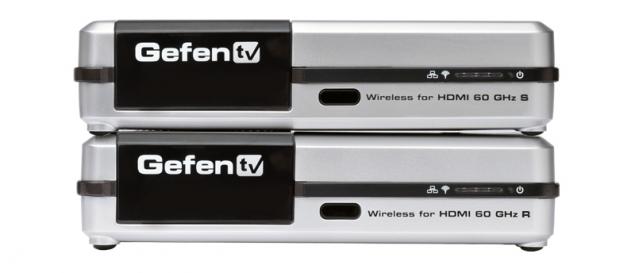
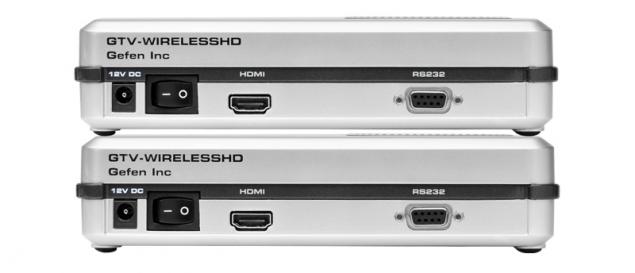

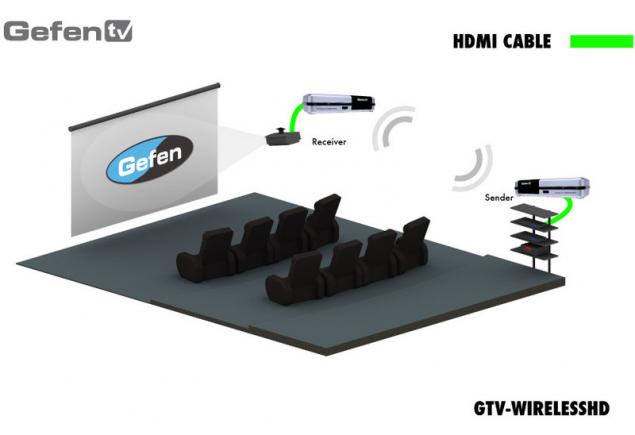
Price: ~900$ — 1000$, rating 3. BEST BUY Rocketfish WirelessHD
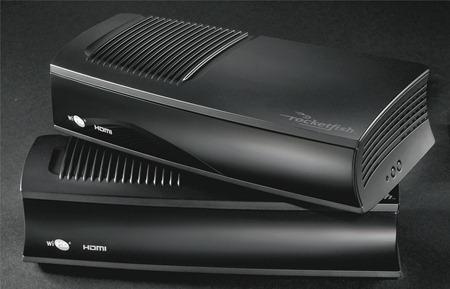
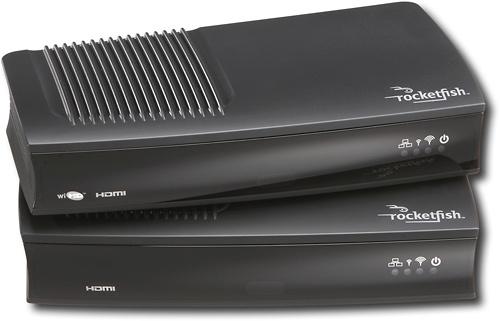
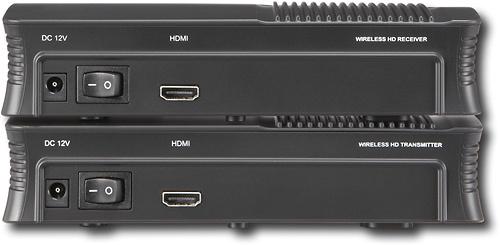
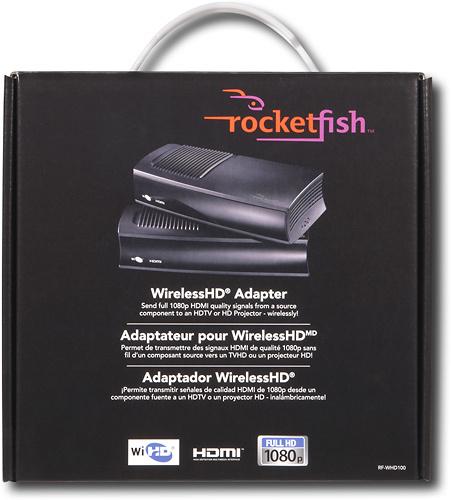
Price: ~600$, score 3+. Cables To Go TruLink 1-Port 60 GHz WirelessHD Kit
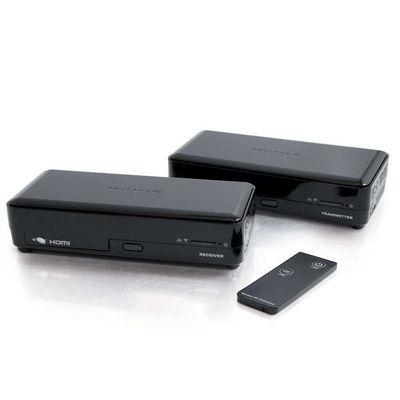
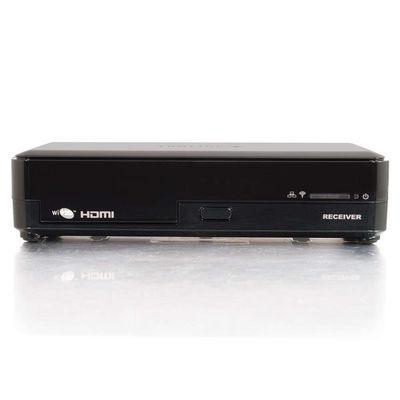
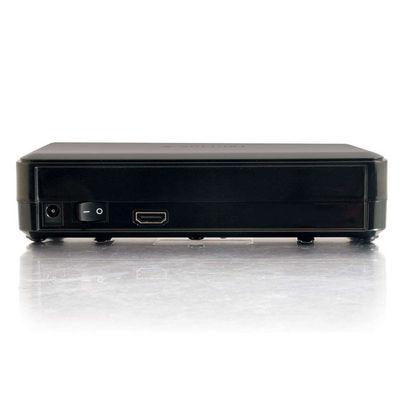
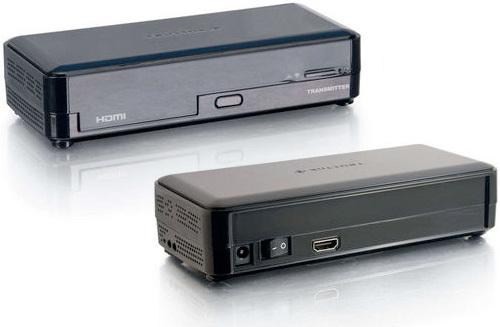
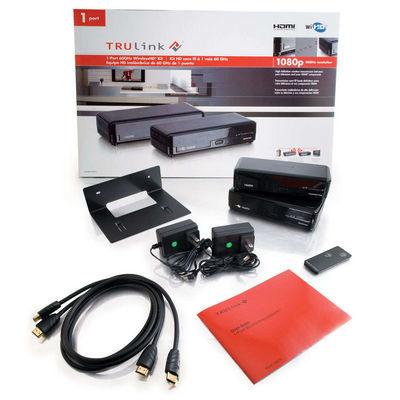
Price ~410$, rating 4. As you can see, all of the devices are quite expensive and are not able to pass the signal through any serious obstacles. However, in return we get higher (say even is possible) the quality of HD 1080p videos@60fps and 7.1 sound without a single delay. As a quick fact about the product will tell you that the boxes used receiving-transmitting array as much of the 36 antennas that provides such a high quality.
WHDi will Remind the reader that all WHDi-devices use the same set of chips company AMIMON, and for the details of functioning of this technology, You can refer to the last article. Also, the technical details of the standard well described here. In short: there is not 36 antennas, and a total of from 2 to 5, and the signal is encoded (compressed) to fit in the allocated radiopolis.
General assessment of all WHDi-devices:
Quality: grade 4 (Video up to 1080p@30Hz (30fps, the fps.) inclusive, and 5.1 sound).
Distance: rating 5 (signal passes through walls, 30-50 meters)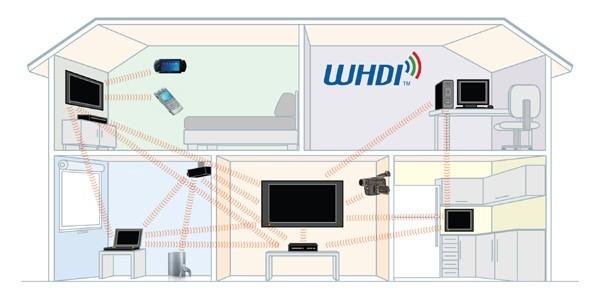
Brite-View BV-2500 Wireless HD Video Transmitter and Receiver Kits
In this device there are a lot of absolutely accurate of the clones, here's just some of them: marmitek GigaVideo800 HDMI,Cablesson i90 Wireless, Gonbes gbs-330
.
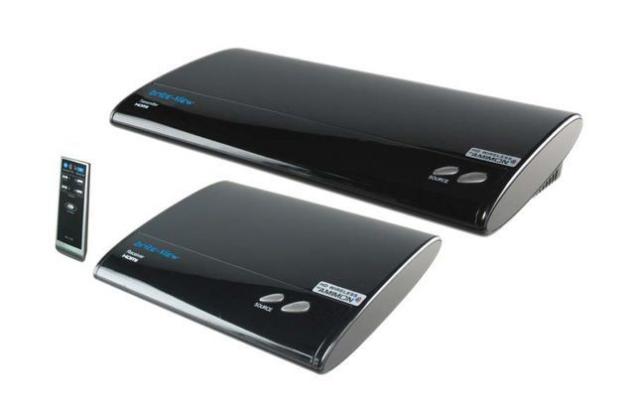
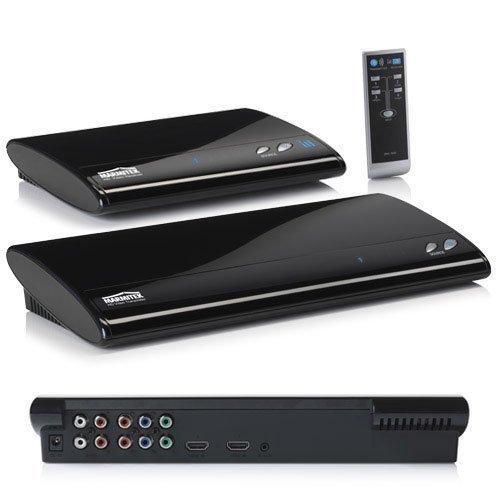
Transmitter:
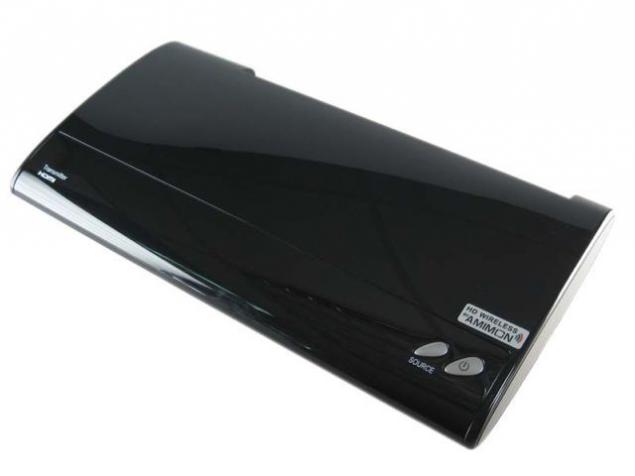
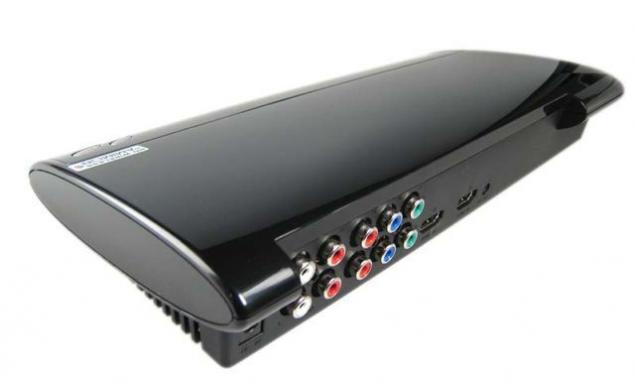
Receiver:
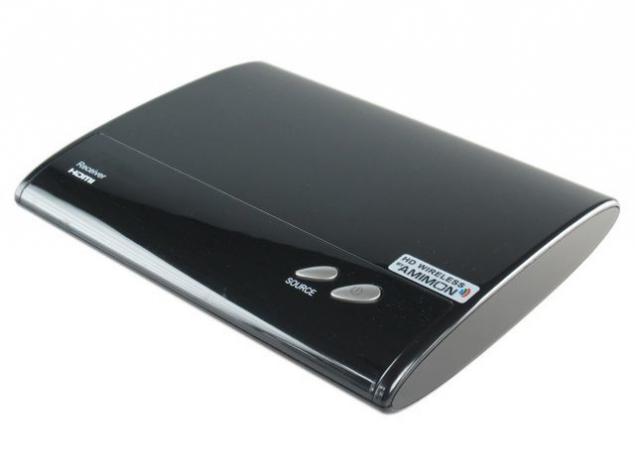
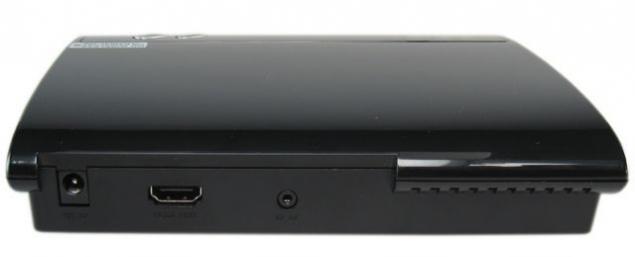
Price: depending on the brand ~210$ — 540$, rating 5/3. GefenTV Wireless for HDMI
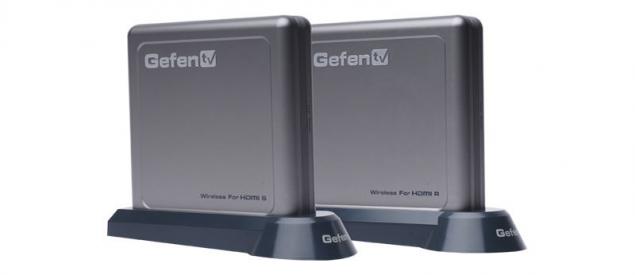
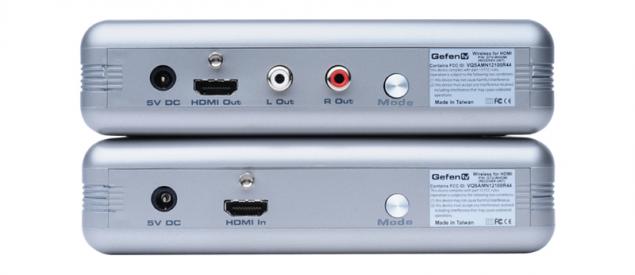
Price: ~530$ — 900$, rating 3. CWHDI-TXRX — Digital HDMI Wireless Sender
Transmitter:


Receiver:


Price: ~1170$, score of 3.
Summarizing WHDi As You have noticed, almost all units to the transmitter you can connect multiple sources (e.g., the console and the laptop) and quickly switch between them. This is done in order not to peretyat each time the wire to another device. Simultaneous transmission from two sources not (yet) possible.
The important point is that when the signal passes through obstacles possible time delay from 10 to 100 milliseconds, depending on the composition and thickness of the obstacles which, coupled with maximum 30 frames per second makes the solution unsuitable for a full HD interactive, the game type in the console, under certain conditions.
Of buns WHDi — since HD video does not need feedback, the solution will be ideal for the transmission of high-quality content through one or more walls/floors/ceilings.
As the creators of the standard have promised that in coming months there will be devices on their new chip, the transmission delay will decrease significantly, as the level of signal compression and frame rate in 1080p video will reach a maximum of 60fps.
UPD.: It seems that the promised new items with the transmission of 1080p@60 took such bigwigs as ASUS and, presumably, the new WHDi is the basis of crafts from HP .
Also two new items on the new WHDi chip is presented by the American Brite-View is a compact, powered from transmitter USBHDelight rival devices from ASUS and HP, as well as a super Air-SyncHD, capable of transmitting HD video with the maximum quality with the smallest latency less than 1 MS.
Proprietary (closed, proprietary technology) it Should be noted immediately that to survive in the market of wireless transmission of video and sound proprietary technology is very difficult, because they just “rolled” the alliances are the largest manufacturers built around already established standards. Many of the previously existing, proprietary solutions already “rested in the Lord”. However, occasionally there's enough high-quality solutions in closed technologies, the most successful of them:
Based on Wi-Fi 802.11 n 5Ghz Features (and therefore evaluation) is very similar to WHDi latest version:
Quality: rating 4.5 (Video up to 1080p@60Hz (60fps, frame/sec.) inclusive, and 5.1 sound). Distance: rating 5 (signal passes through walls, 30 meters).
Price: ~330$-1000$, rating 4/3.
The device iznachalno presented by the Korean firm Itrio, just released IOGEAR American and European Eminent.
This furious monster able to transmit and receive the signal via HDMI, VGA, RCA (audio and video tulips), SCART, component, RCA, 3.5 mm-jack. While it is possible even to transfer over the wired LAN, in this case the possible distance between the transmitter and receiver will depend on the capabilities of the network itself.
Itrio (left receiver to the right — the transmitter):
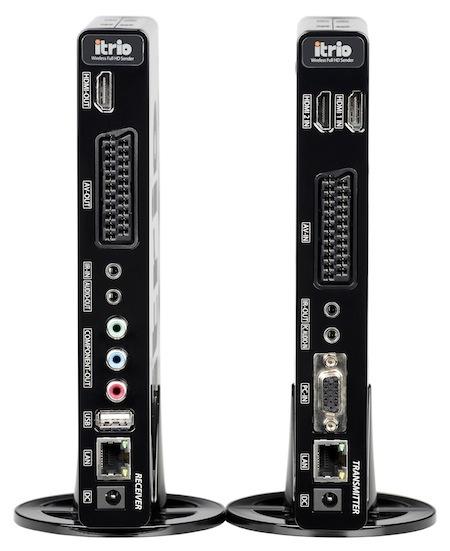
IOGear (here tulips instead of SCART, but otherwise identical Itrio):
rear (left receiver to the right — the transmitter):
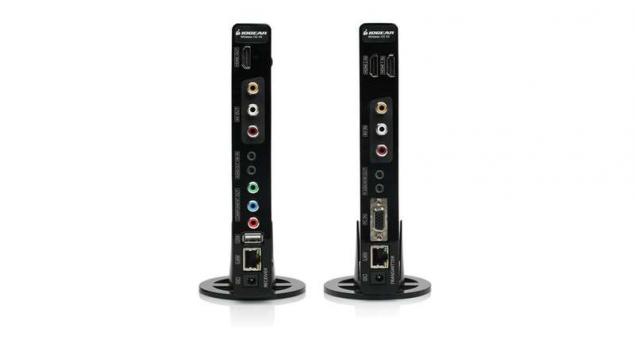
front:
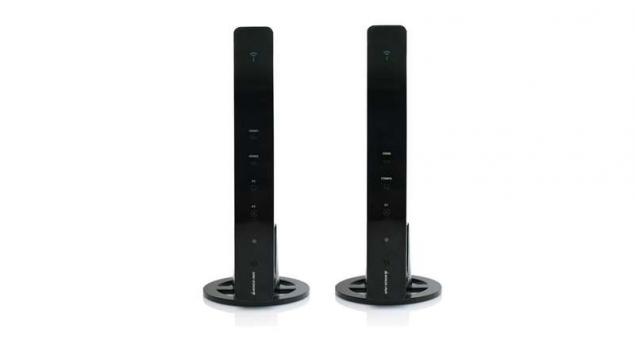
General appearance and package:
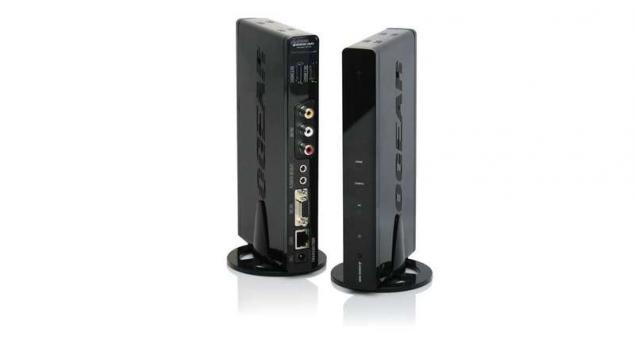

Provision AXAR1500 Alone among the other, it is a powerful device, which is based on the same Wi-Fi 802.11 n, capable of covering a large area transmission wireless video and audio, a radius as much as up to 270 meters, however, is not received back on the market. The promise of the manufacturer in this direction is indefinite: “it Will be available, presumably, closer to the New Year”.
Evaluation:
Quality: if to trust promises of the manufacturer rating 5 (HD video and sound with the maximum quality and without lag).
Distance: again, if you believe the manufacturer, rating 5++ (signal passes through walls, the covering radius is the maximum of all known — 270 meters, can provide a signal cottage standard size delivery in all rooms).
set “of transmitter-receiver-remote”:
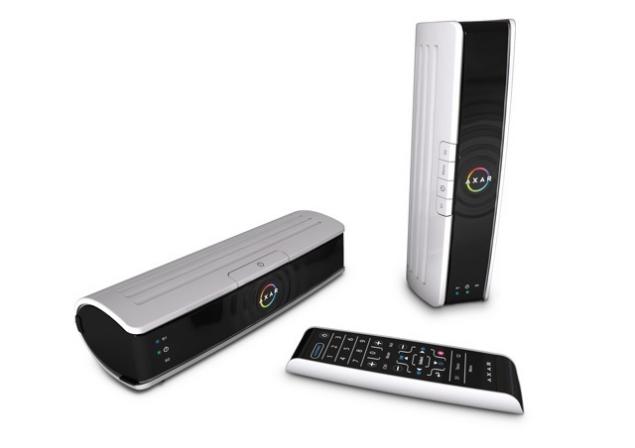
provides a signal to the entire house:
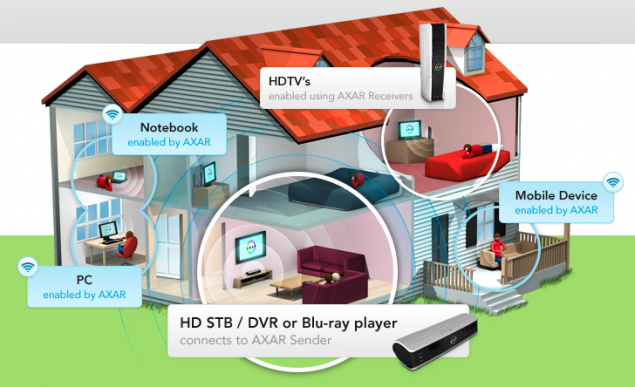
in comparison with the TV:

Price: unknown, but judging by the quality and size, most likely will score 2. The device has an interesting feature — since wireless transmission built on open protocols, it is possible to send video and audio to the receiver for example, from VLC player with PC/laptop via Wi-Fi.
Ultra-speed technology TZero, This technology could not compete with parties to these comrades. However, her child still deserves attention:
Gefen Wireless for HDMI UWB Extender.
It is the only device with broadband transmission and is able to drive all uncompressed video through walls.
Evaluation:
Quality: grade 4 (Video up to 1080p@30Hz (30fps, the fps.) inclusive, and 5.1 sound).
Distance: rating 4 (transmission up to 10 meters across major obstacle).
Price: ~1000$, rating 3.
transmitter:
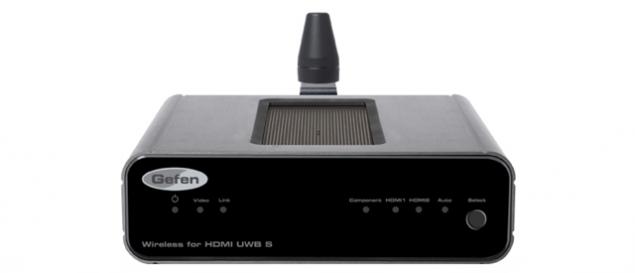
receiver:
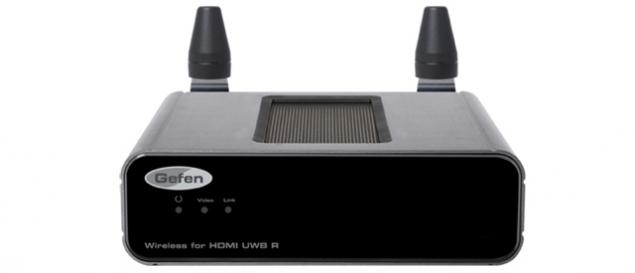
both:
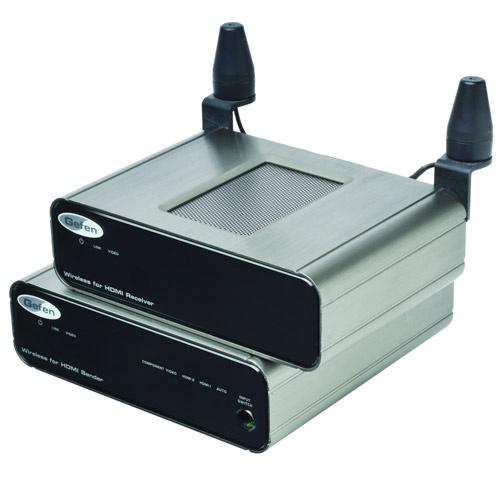
Summing up Today, you can judge the high dynamics of development of the industry, the mere fact that at the time of writing (autumn) was presented already four (!!!) extender/videosender for HD signal. The author is just now working on finding material for the review of novelties.
The greatest progress and development speed observed in the standard WHDi (AMIMON), which is capable of transmitting wireless video and the sound is almost the highest quality (1080p@60Hz, Dolby 5.1) through walls and other obstacles, and in 2010 promised support for 3D. Also can not please the price of the solutions based on the WHDi.
Other solutions are either in an embryonic stage(ProVision AXAR), or already in market(TZero). Also, many price is still not yet fallen to an acceptable value and the highest quality, the transmission distance is small(WirelessHD).
Presentations, business forums, business meetings, represent a complex hardware system, so the equipment of the conference hall provides for availability of various high-tech electronics. Such equipment allows to improve the actual results from such activities.
Source: habrahabr.ru/post/105614/
So, before you rush to learn a specific piece of iron, let's first review the essence of the extenders. The word extender is derived from the English verb “extend” to expand. That is, devices designed to extend the transmission of video and audio from one device to another/others, with the device of reception and transmission should not “strain” and “notice” some intermediate units. The transfer must be made transparent.
Why is it HD video and no less? — You will ask. Answer: actually using extenders to pass in not only HD, but since everything discussed in the article, topical units, aiming to work with a modern interface HDMI combines both video and sound, and focused mainly on the HD, then stop on it.
Nutshell, the extenders are designed just to remove the HDMI cable without loss of signal transfer between any devices which can be connected to this wire.
For example, let's say You have a Sony PlayStation 3 or Xbox 360, or laptop with HDMI/DVI output which/from which You want to send wireless video and high quality sound to your HD TV. Then, instead of a long HDMI wire connecting to the console or laptop via HDMI (if your laptop is DVI, using an adapter) You connect the first component extender transmitter (transmitter), to the TV also using HDMI to connect the second component extender receiver signal (reciever). Between the transmitter and the receiver establishes a wireless connection. Doesn't matter what Protocol is used and its characteristics, You have to remain as it was: input — HDMI output — HDMI. Only between the source and the receiver, no wires. No need to install any drivers or additional software, your devices will continue to think that the connected HDMI cable.
Again, do not forget that the reception-transmission of such data volumes requires more energy, so that the receiver and transmitter in the composition of the extender should be included in the socket or if the manufacturer of the extender has provided the opportunity, to power the transmitter and/or receiver from the USB port.
Again, as sources in such a scheme there may be any devices with HDMI output: console, DVD/Blueray players, media servers (for example, as Umburana — tyts), video cards and motherboards and nettops with built-in HDMI port, laptops, smartphones and tablets (the HTC EVO 4G or Dell Streak with the ability to output the HDMI signal).
Receiver, respectively, may be any device with a HDMI input, which nowadays are a great number: HD-ready and FullHD TV sets, monitors, projectors, boards, audio-video capture.
Based extenders, although for the user this is transparent, is still some sort of standardized or proprietary wireless signal transmission. The main such technologies were thoroughly discussed in a previous article, so we can only group existing solutions on the technologies used and give them a consumer rating.
Assessments will be billed in the following categories:
1.the maximum quality of the transmitted audio/video — Video up to 1080i, inclusive, and the sound is stereo or 5.1 — 3.
After some thought I decided not to inflate this, and so have the resulting is not small, the review, therefore, detailed description (irrelevant) devices that support only 1080i will be omitted. I can only say that at various times in this field have managed to stand out Sony, Philips, Belkin.
Video up to 1080p@30Hz (30fps, the fps.) inclusive, and the sound 5.1 — 4 rating.
Video up to 1080p@60Hz, inclusive, sound 7.1 — 5.
2.maximum transmission distance — one room (10-20 meters), direct visibility, but there may be obstacles (chairs, people) — 3.5.
signal passes through walls, 30-50 meters — evaluation 5.
3.the price in Western stores (if you suddenly find the device in the CIS, the formula pricing can be difficult for even the most inquisitive minds) — up to$ 300 — 5 stars.
— up to$ 500 — 4 rating.
— $ 500 — 3 rating.
We will start with...
WirelessHD As all of the following glands is built on the same chip SiBEAM (more about this in a previous article), then they will differ only by brand, price and appearance. Thus, the total score for all the quality and distance:
Quality: score 5 (Video up to 1080p@60Hz, audio 7.1) Distance: 3.5 (one room (10-20 meters), direct visibility, but there may be minor obstructions).
Now (Hooray!) glands:
GEFENTV HDMI WirelessHD for




Price: ~900$ — 1000$, rating 3. BEST BUY Rocketfish WirelessHD




Price: ~600$, score 3+. Cables To Go TruLink 1-Port 60 GHz WirelessHD Kit





Price ~410$, rating 4. As you can see, all of the devices are quite expensive and are not able to pass the signal through any serious obstacles. However, in return we get higher (say even is possible) the quality of HD 1080p videos@60fps and 7.1 sound without a single delay. As a quick fact about the product will tell you that the boxes used receiving-transmitting array as much of the 36 antennas that provides such a high quality.
WHDi will Remind the reader that all WHDi-devices use the same set of chips company AMIMON, and for the details of functioning of this technology, You can refer to the last article. Also, the technical details of the standard well described here. In short: there is not 36 antennas, and a total of from 2 to 5, and the signal is encoded (compressed) to fit in the allocated radiopolis.
General assessment of all WHDi-devices:
Quality: grade 4 (Video up to 1080p@30Hz (30fps, the fps.) inclusive, and 5.1 sound).
Distance: rating 5 (signal passes through walls, 30-50 meters)

Brite-View BV-2500 Wireless HD Video Transmitter and Receiver Kits
In this device there are a lot of absolutely accurate of the clones, here's just some of them: marmitek GigaVideo800 HDMI,Cablesson i90 Wireless, Gonbes gbs-330
.


Transmitter:


Receiver:


Price: depending on the brand ~210$ — 540$, rating 5/3. GefenTV Wireless for HDMI


Price: ~530$ — 900$, rating 3. CWHDI-TXRX — Digital HDMI Wireless Sender
Transmitter:


Receiver:


Price: ~1170$, score of 3.
Summarizing WHDi As You have noticed, almost all units to the transmitter you can connect multiple sources (e.g., the console and the laptop) and quickly switch between them. This is done in order not to peretyat each time the wire to another device. Simultaneous transmission from two sources not (yet) possible.
The important point is that when the signal passes through obstacles possible time delay from 10 to 100 milliseconds, depending on the composition and thickness of the obstacles which, coupled with maximum 30 frames per second makes the solution unsuitable for a full HD interactive, the game type in the console, under certain conditions.
Of buns WHDi — since HD video does not need feedback, the solution will be ideal for the transmission of high-quality content through one or more walls/floors/ceilings.
As the creators of the standard have promised that in coming months there will be devices on their new chip, the transmission delay will decrease significantly, as the level of signal compression and frame rate in 1080p video will reach a maximum of 60fps.
UPD.: It seems that the promised new items with the transmission of 1080p@60 took such bigwigs as ASUS and, presumably, the new WHDi is the basis of crafts from HP .
Also two new items on the new WHDi chip is presented by the American Brite-View is a compact, powered from transmitter USBHDelight rival devices from ASUS and HP, as well as a super Air-SyncHD, capable of transmitting HD video with the maximum quality with the smallest latency less than 1 MS.
Proprietary (closed, proprietary technology) it Should be noted immediately that to survive in the market of wireless transmission of video and sound proprietary technology is very difficult, because they just “rolled” the alliances are the largest manufacturers built around already established standards. Many of the previously existing, proprietary solutions already “rested in the Lord”. However, occasionally there's enough high-quality solutions in closed technologies, the most successful of them:
Based on Wi-Fi 802.11 n 5Ghz Features (and therefore evaluation) is very similar to WHDi latest version:
Quality: rating 4.5 (Video up to 1080p@60Hz (60fps, frame/sec.) inclusive, and 5.1 sound). Distance: rating 5 (signal passes through walls, 30 meters).
Price: ~330$-1000$, rating 4/3.
The device iznachalno presented by the Korean firm Itrio, just released IOGEAR American and European Eminent.
This furious monster able to transmit and receive the signal via HDMI, VGA, RCA (audio and video tulips), SCART, component, RCA, 3.5 mm-jack. While it is possible even to transfer over the wired LAN, in this case the possible distance between the transmitter and receiver will depend on the capabilities of the network itself.
Itrio (left receiver to the right — the transmitter):

IOGear (here tulips instead of SCART, but otherwise identical Itrio):
rear (left receiver to the right — the transmitter):

front:

General appearance and package:


Provision AXAR1500 Alone among the other, it is a powerful device, which is based on the same Wi-Fi 802.11 n, capable of covering a large area transmission wireless video and audio, a radius as much as up to 270 meters, however, is not received back on the market. The promise of the manufacturer in this direction is indefinite: “it Will be available, presumably, closer to the New Year”.
Evaluation:
Quality: if to trust promises of the manufacturer rating 5 (HD video and sound with the maximum quality and without lag).
Distance: again, if you believe the manufacturer, rating 5++ (signal passes through walls, the covering radius is the maximum of all known — 270 meters, can provide a signal cottage standard size delivery in all rooms).
set “of transmitter-receiver-remote”:

provides a signal to the entire house:

in comparison with the TV:

Price: unknown, but judging by the quality and size, most likely will score 2. The device has an interesting feature — since wireless transmission built on open protocols, it is possible to send video and audio to the receiver for example, from VLC player with PC/laptop via Wi-Fi.
Ultra-speed technology TZero, This technology could not compete with parties to these comrades. However, her child still deserves attention:
Gefen Wireless for HDMI UWB Extender.
It is the only device with broadband transmission and is able to drive all uncompressed video through walls.
Evaluation:
Quality: grade 4 (Video up to 1080p@30Hz (30fps, the fps.) inclusive, and 5.1 sound).
Distance: rating 4 (transmission up to 10 meters across major obstacle).
Price: ~1000$, rating 3.
transmitter:

receiver:

both:

Summing up Today, you can judge the high dynamics of development of the industry, the mere fact that at the time of writing (autumn) was presented already four (!!!) extender/videosender for HD signal. The author is just now working on finding material for the review of novelties.
The greatest progress and development speed observed in the standard WHDi (AMIMON), which is capable of transmitting wireless video and the sound is almost the highest quality (1080p@60Hz, Dolby 5.1) through walls and other obstacles, and in 2010 promised support for 3D. Also can not please the price of the solutions based on the WHDi.
Other solutions are either in an embryonic stage(ProVision AXAR), or already in market(TZero). Also, many price is still not yet fallen to an acceptable value and the highest quality, the transmission distance is small(WirelessHD).
Presentations, business forums, business meetings, represent a complex hardware system, so the equipment of the conference hall provides for availability of various high-tech electronics. Such equipment allows to improve the actual results from such activities.
Source: habrahabr.ru/post/105614/
9 wonderful places in Russia, where good together
Leonid Boguslavsky: you Can still start from scratch







